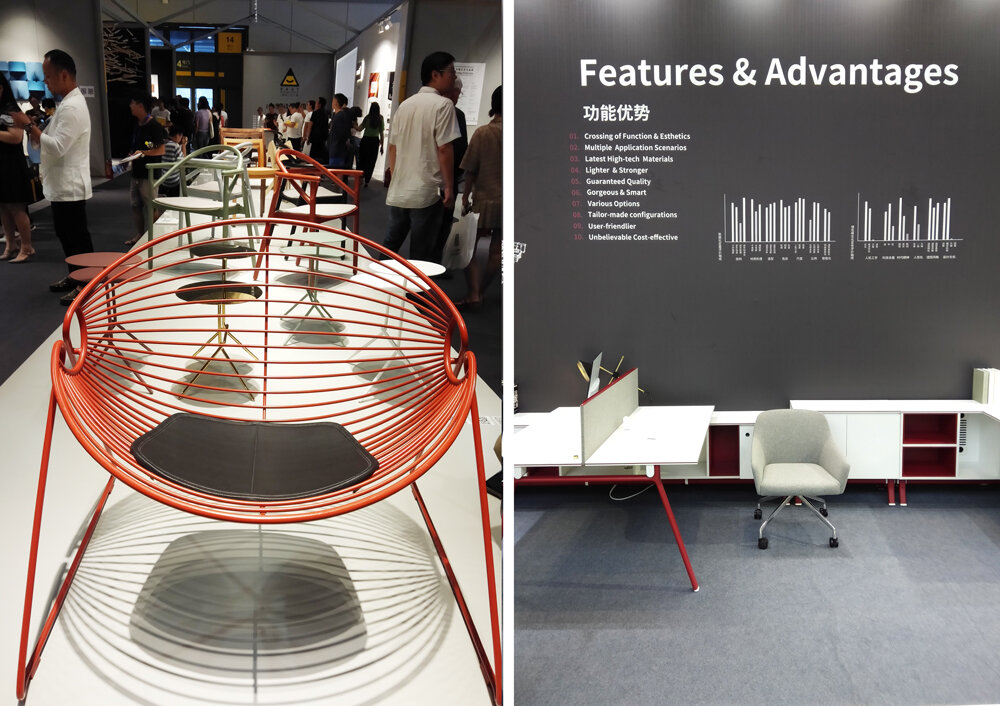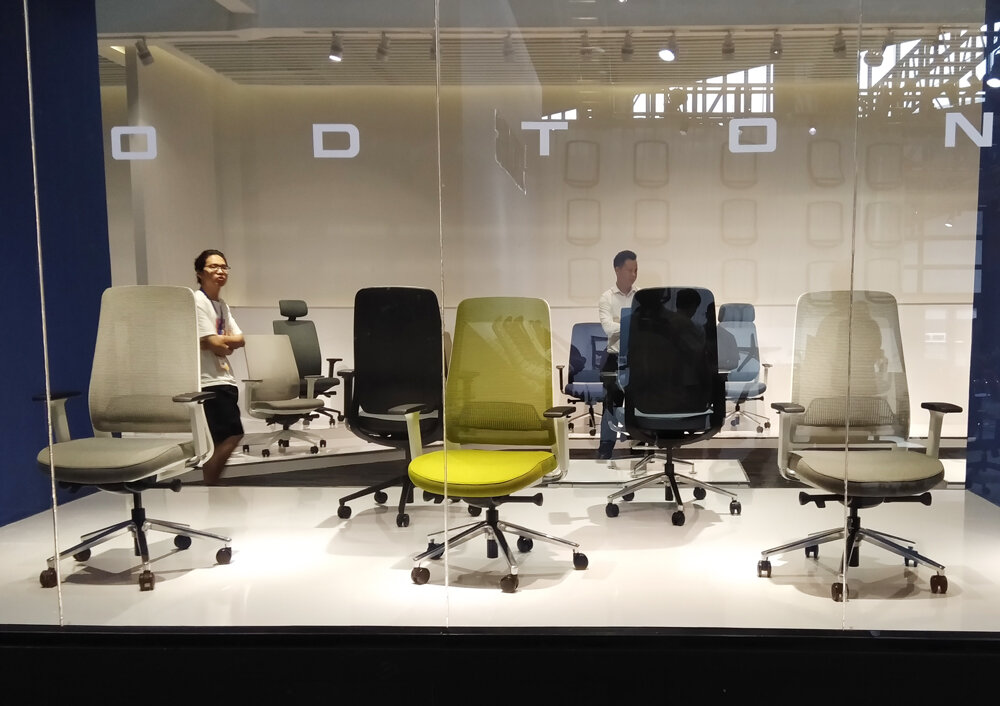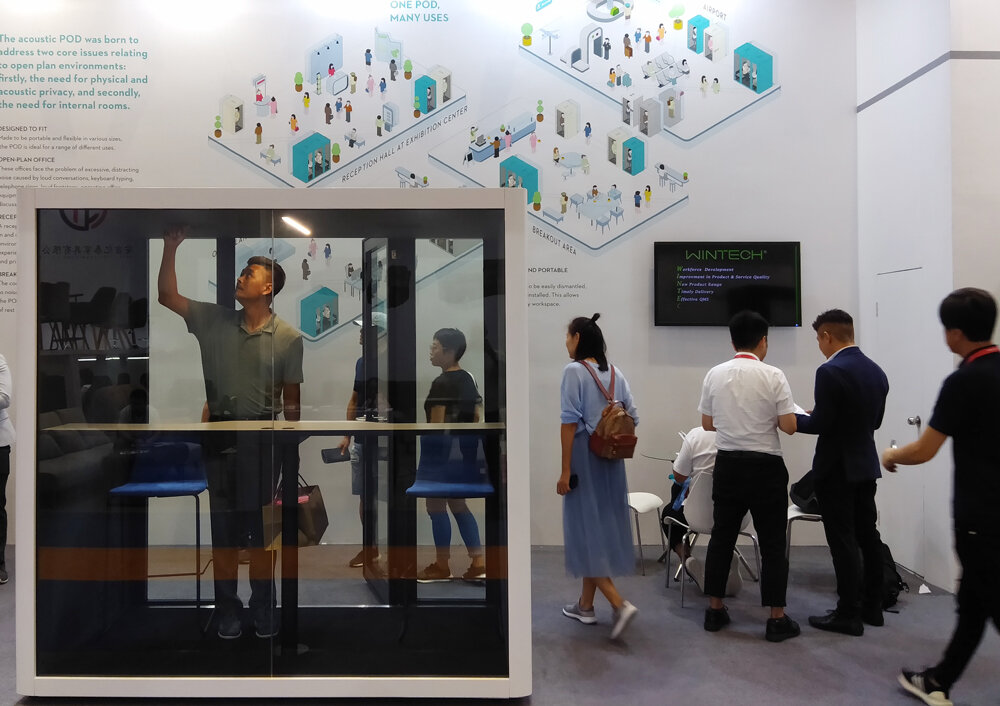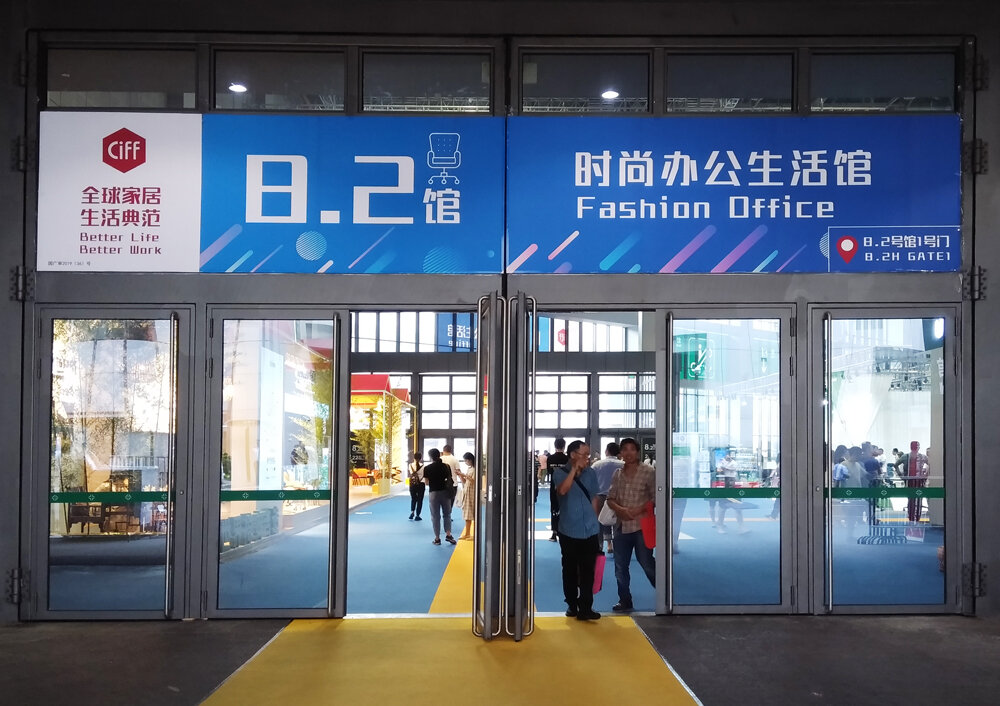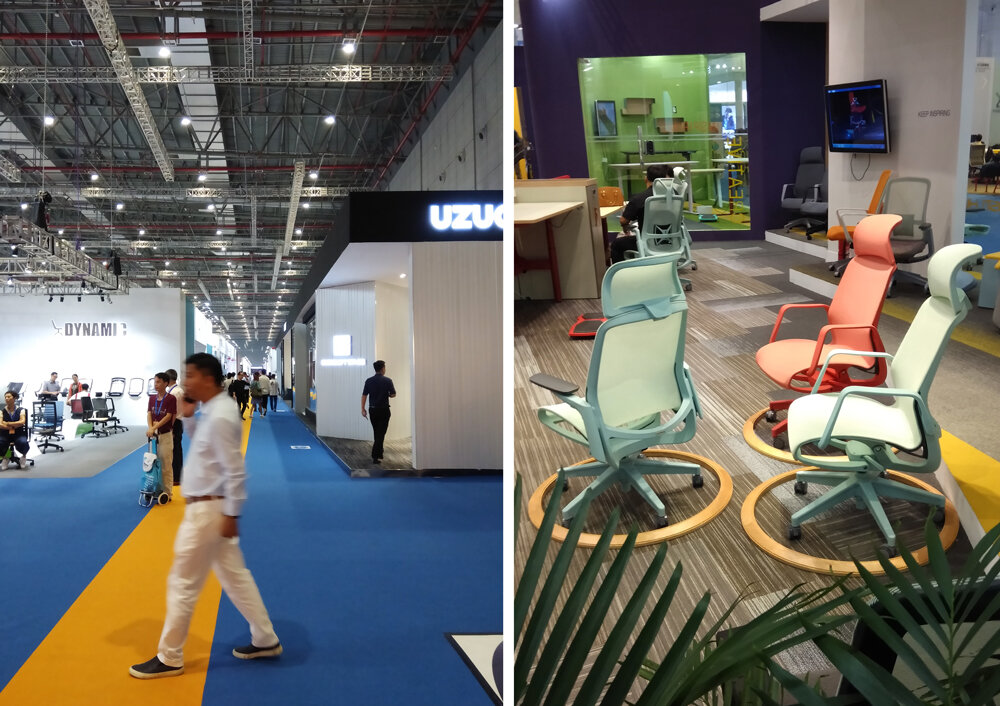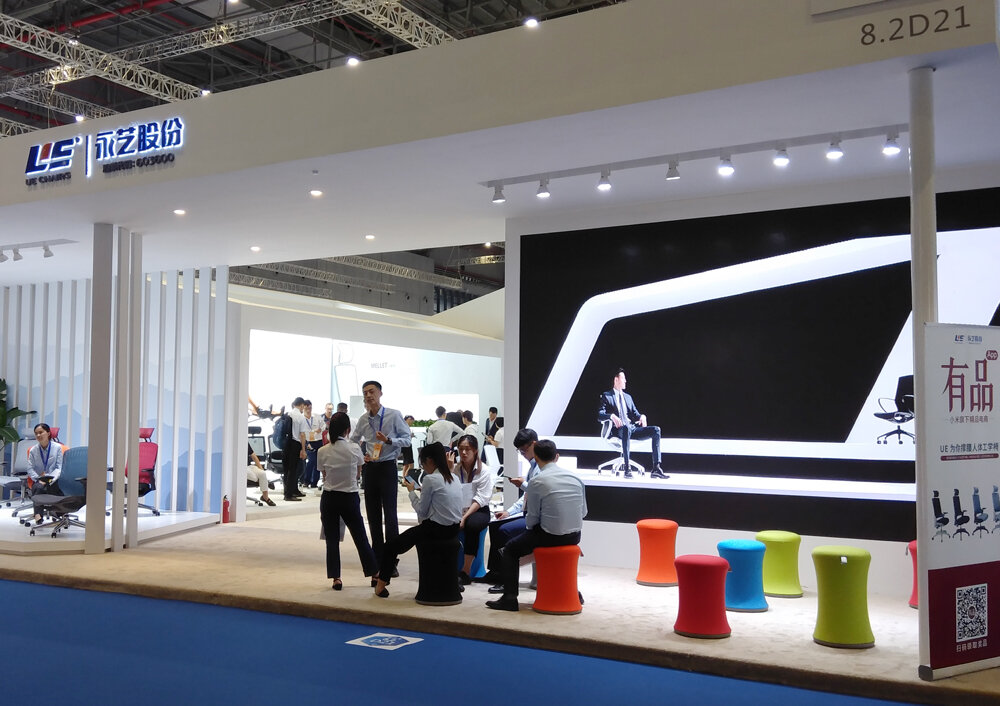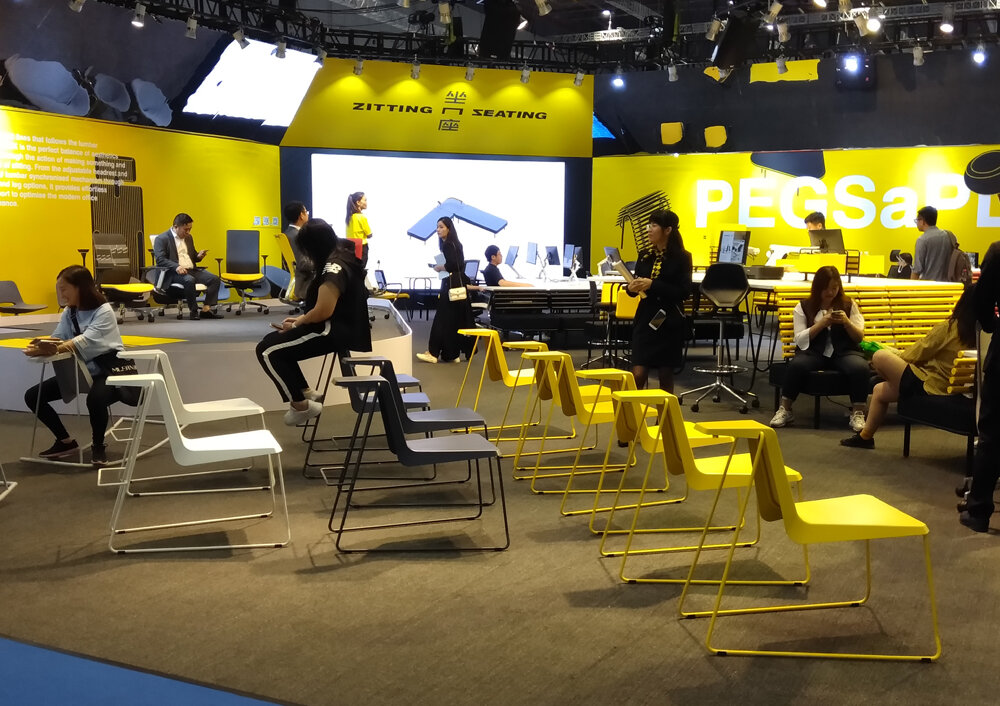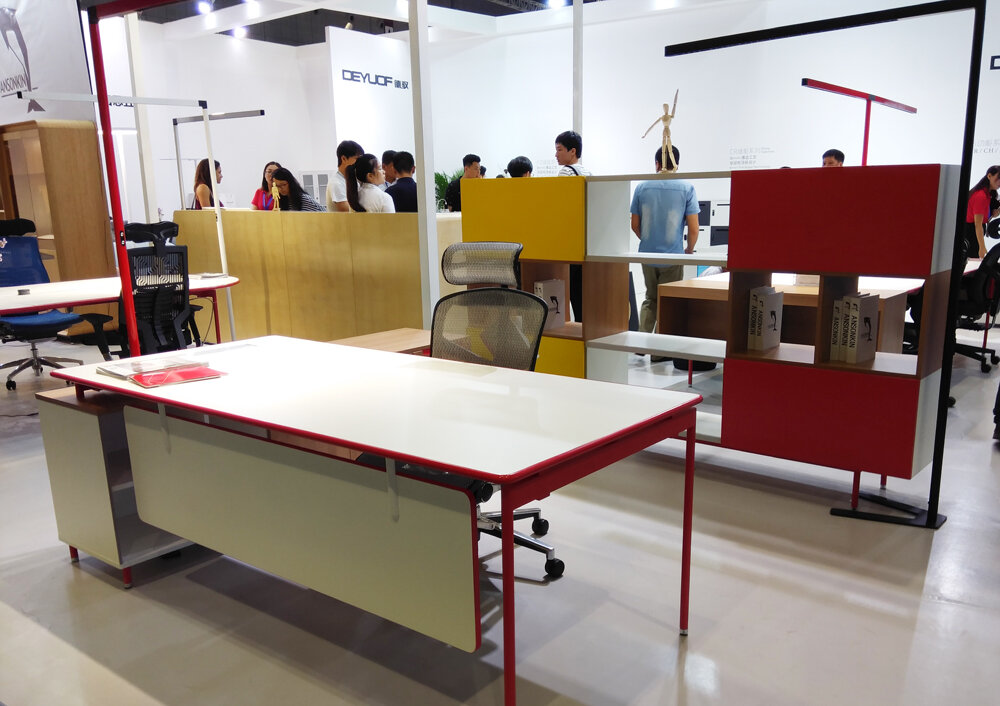CIFF: China International Furniture Fair
We recently visited Shanghai in China to attend the annual Furniture trade fair “China International Furniture Fair” or “CIFF” for short and, on the opposite side of the city, “China International Furniture Expo” or “Furniture China” for short, organized by an alternative group. Our main focus was CIFF and FC happened to be a bonus. It was our first time at a trade fair in China and being stalwarts of Orgatec, Milan and Stockholm we were obviously intrigued to compare our experiences and did not know what to expect.
CIFF is held twice a year, March in Guangzhou and September in Shanghai. This was the 44th CIFF held in the West of the city at the National Convention and Exhibition centre in Hongqiao. An impressive venue that resembles a 4 leaf clover, in plan, with each leaf divided internally to accommodate the various furniture disciplines. The venue has 3 stories with central hub that contains the food offer and an outdoor walkway that circulates, allowing easy navigation to each section of the structure.
There was a much broader spectrum on offer than what we are used to, in that there were halls dedicated to woodworking machinery, Outdoor leisure and beds, so a more complete reflection of the industry. Our main interest, was described as “fashion office” which took up a single dedicated hall.
So how did a chinese office furniture trade fair compare to our experiences in the west? Would there be evidence of brands we recognized? Would there be similar trends on show? Most Western visitors to Orgatec would be familiar with the Chinese presence located toward the back of the halls in the Messe, so what should be expected on home turf.
Continue reading below
Our limited experience of Eastern companies meant we had to assess what we saw at face value alone rather than having biased judgement due to our familiarity with brand identity. We were also in a minority, as Westerners, and we stood out as potential customers. Our relative conspicuousness served as a big disadvantage for our purpose, to observe, and the slightest interest we showed in a product meant we were immediately focused on by sales staff. We smiled and politely refused the overzealous sales techniques which would be unusual to experience at a European show.
As far as macro trends go the familiar themes were all there: sit stand desks shared the same popularity, break out soft seating was in evidence and there were a few examples of the current appetite for enclosed acoustic work booths but nothing really grabbed our attention as a unique eastern perspective on the workplace.
There did appear to be a cultural divide between exhibitors in the office sector though. On the one hand, there were a number of companies that embraced the power of design and marketing. These stands had a strong brand identity and understood the importance of presentation, exhibited their products with a narrative based sale and employed English speaking staff. The product offering was original and in line with what we would expect to see in Europe or the US and many worked with external designers from the east and in some cases the west. At the other extreme there were a number of stands where the company hadn’t made the cultural shift to a design led, brand driven model and the sell was firmly about commodity. It was difficult to differentiate between them as stands were so similar due to the culture of copying and there were also many items on show where the design had obviously been influenced by Western products. Hopefully this will change as more Chinese companies realize the benefits of investing in R&D.
The irony in all this was that there seemed to be a strict no photos rule, for fear of ideas being stolen. In recent times, at the major European shows, Western companies have somewhat given up in trying to stem the tide of snap happy punters photographing new product on their mobile devices, instead realising that much of the content will end up being shared on social media, almost immediately, and is therefore a form of free advertising.
On the other side of Shanghai, in Pudong, was the concurrent show “Furniture China” which we visited on a separate day. The layout for this venue is a triangle of individual halls with an outdoor area in the centre. This exterior space was filled with various temporary structures to accommodate the amount of product on offer. Although the entire show appeared more extensive than CIFF the office hall, situated in one of the aforementioned temporary structures, was somewhat smaller and leant toward the lower end of the market as previously described. It became obvious to us that the office sector seemed to be slightly lagging behind the rest of the furniture industry somewhat, in terms of sophistication, and this became very apparent when we looked through the halls labelled “brand design” and “contemporary design” which were aimed at the domestic and contract markets. Here we witnessed some genuine unique design in terms of stand presentation, brand identity and actual product. There were some real innovations and attractive pieces with a manufacturing quality to match. It was also great to see some companies that had contemporary designs which retained an eastern sensibility in their DNA, combining modern styling with sensitive use of traditional motifs. In these halls it was obvious to see who the main players were and a real sense of confident Eastern design identity permeated the halls.
So what did we learn from our trip?
The domestic/contract market is a lot more mature than the office sector
There is a real cultural divide between companies in the office sector: those that understand and have embraced design and those that sell commodity.
There is not much penetration of Western brands that we are familiar with and those that we did see certainly didn’t have much of a presence.
There are similar trends between our markets although some of the latest western obsessions are yet to take hold to the same extent.
There are some bold, original designs coming out of the domestic/contract sector
It's possible to buy a complete office chair for around $20.


